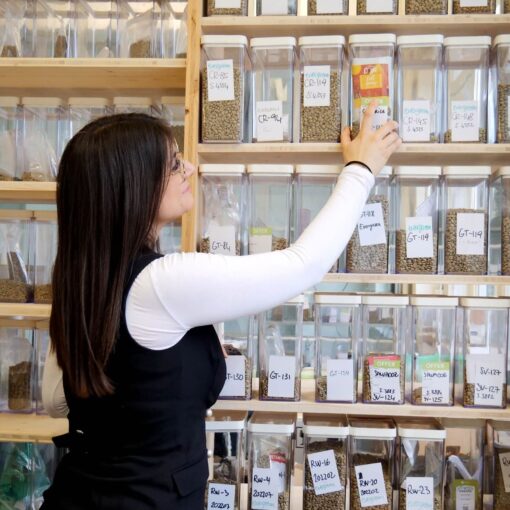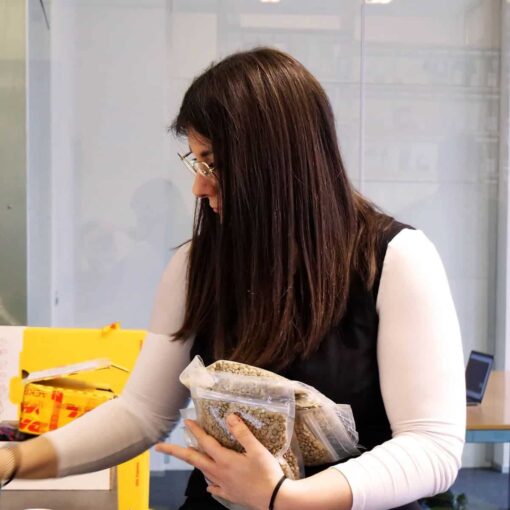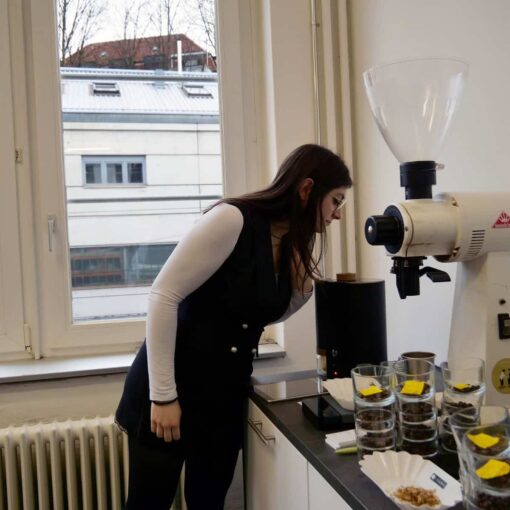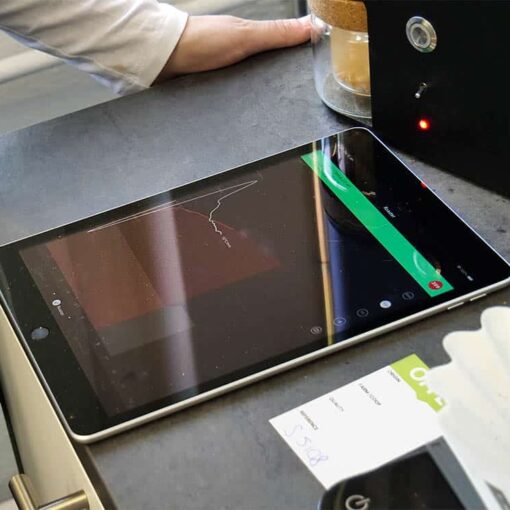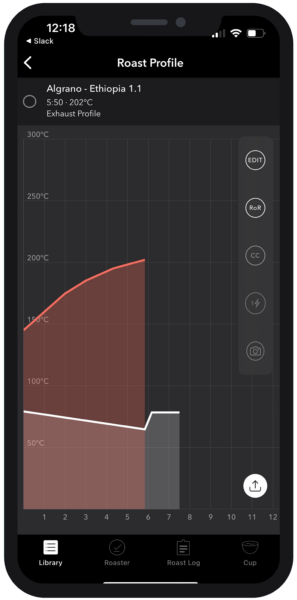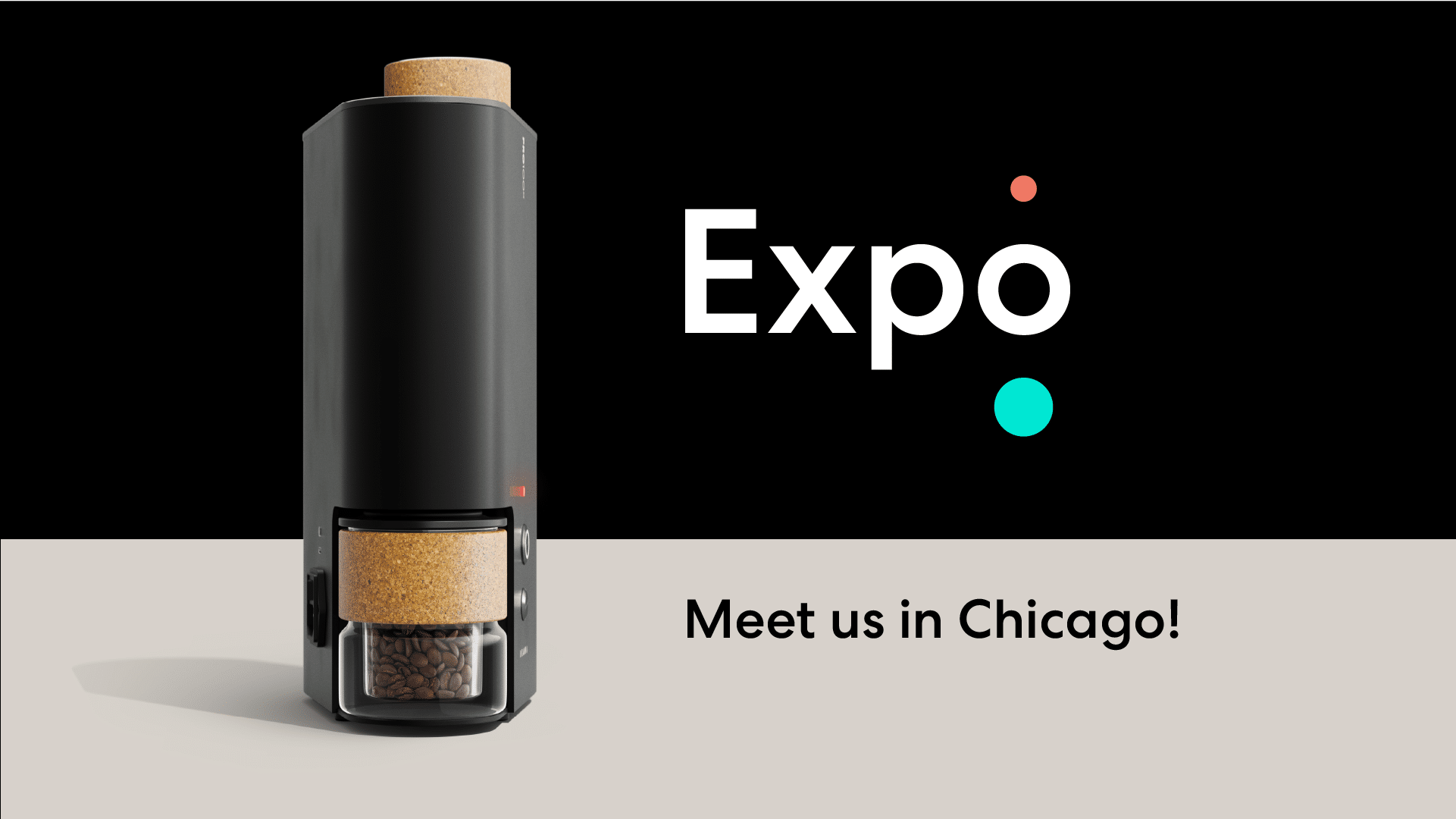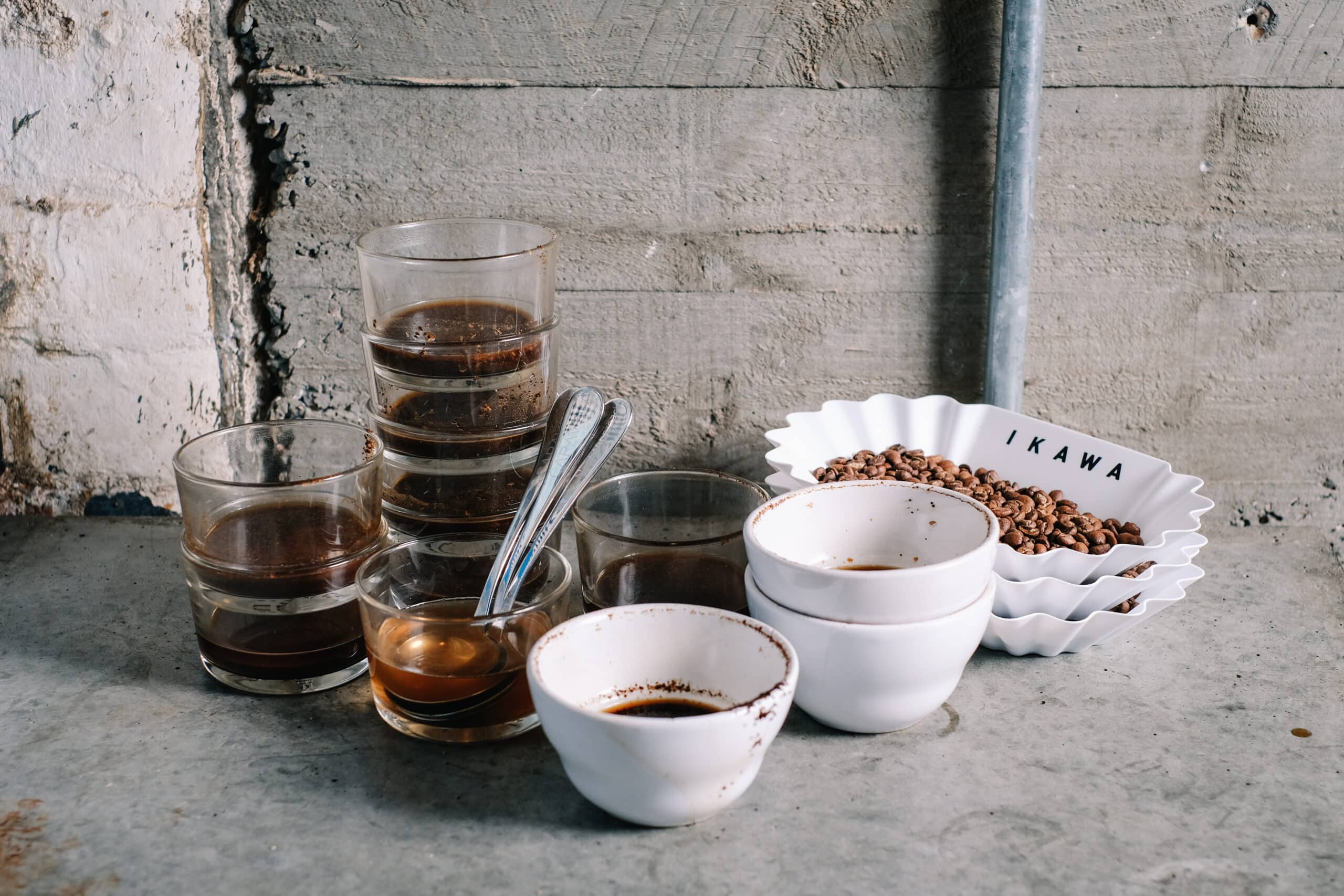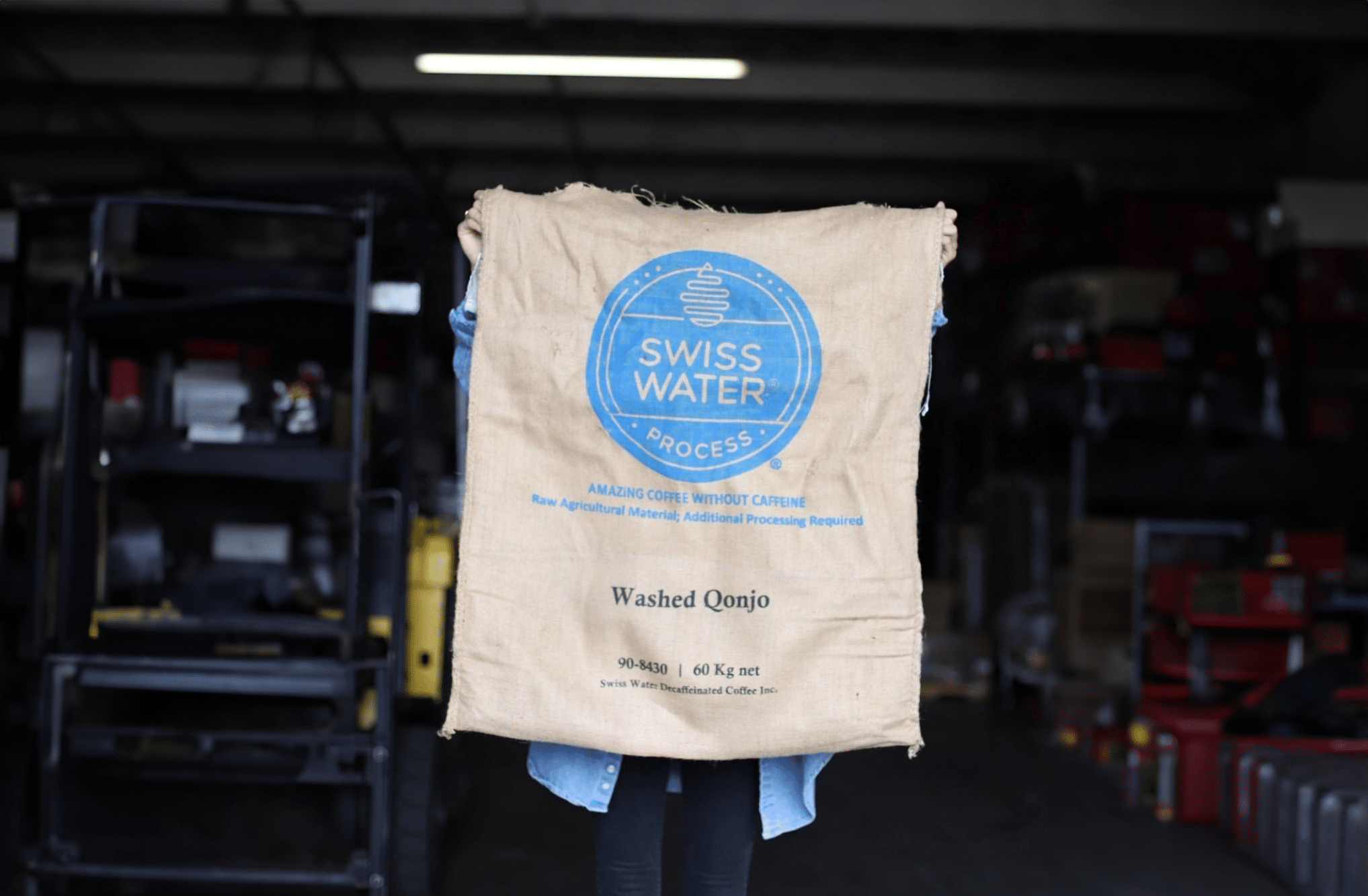The same simplicity goes for sample roasting. Algrano’s lab uses the IKAWA sample roaster since the platform’s launch in 2015. The machine’s ease of use and small batch size allows the team to cover a large volume of samples without requesting too much material from producers.
“Unlike what you would do when roast profiling, a good sample roast doesn’t have to enhance a particular aspect of the coffee,” Jessica explains. For her, it’s not about trying to make the coffee taste better through the roast and rather about assessing each coffee as it is.
“I don’t overcomplicate the sample roast,” she starts. When Jessica gets a new coffee, she chooses an initial profile based on density and country of origin. And this is as simple as a gentle and longer roast curve for lighter beans and a more energetic, faster curve for denser beans.
If she needs to tweak the roast, Jessica focuses on colour, development time ratio (DTR) and total development time. “It really depends on the coffee here. And it helps to be able to change the IKAWA profile as I roast because I take my standard roast curve more as a reference than something to follow precisely.”
Increasingly, Jessica pays more and more attention to a roast’s total development time – she tries to keep it around 50 to 60 seconds. Her roasts on IKAWA are mostly short (less than six minutes), so she gets to 15% or 20% DTR pretty fast. If she ignores the total development time, she ends up with underdeveloped coffee.


